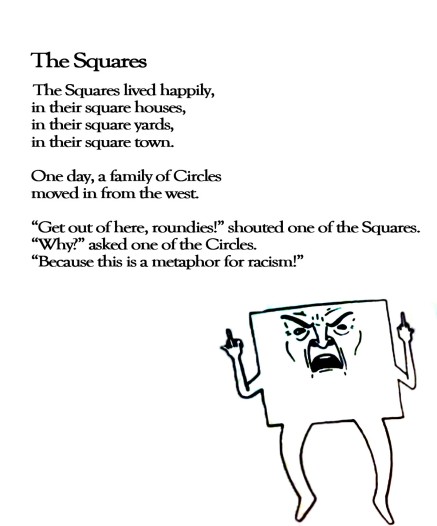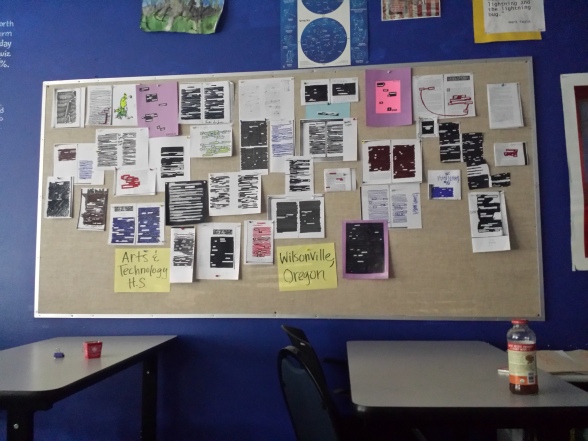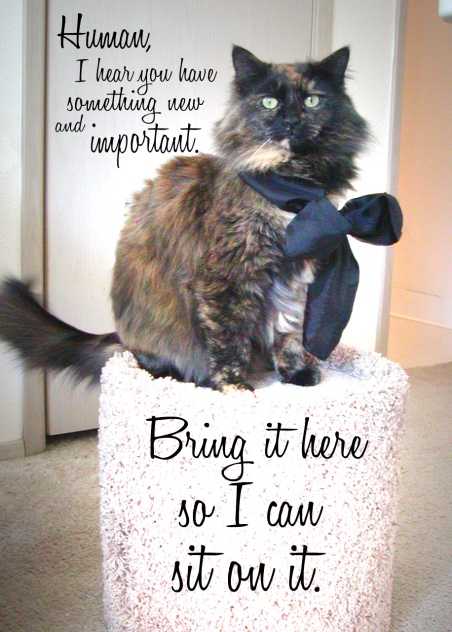 There’s a rule in teaching that if one student asks a question, there are 5 more who have the same question but won’t ask (or 3, or 8, or a thousand like cockroaches, I’m not much into rules and numbers). So when one reader says Katie are you ever going to blog again or are you just going to leave me hanging and brokenhearted?? then I figure there must be a few others. The site says this still gets a few hits a day (thanks, Mom and Dad) so I envision a half dozen of my loved ones grumbling through their computers at me, on a regular basis. So thanks for the nudge (kick) I needed. I honestly didn’t realize it had been since October. Graduate school is all-consuming. All your time, energy, philosophies, sleep, printer ink… So this blog continues to reflect my reality: I am just now resurfacing from October.
There’s a rule in teaching that if one student asks a question, there are 5 more who have the same question but won’t ask (or 3, or 8, or a thousand like cockroaches, I’m not much into rules and numbers). So when one reader says Katie are you ever going to blog again or are you just going to leave me hanging and brokenhearted?? then I figure there must be a few others. The site says this still gets a few hits a day (thanks, Mom and Dad) so I envision a half dozen of my loved ones grumbling through their computers at me, on a regular basis. So thanks for the nudge (kick) I needed. I honestly didn’t realize it had been since October. Graduate school is all-consuming. All your time, energy, philosophies, sleep, printer ink… So this blog continues to reflect my reality: I am just now resurfacing from October.
But I do have some delightful news. I’ve completed my Master of Arts in Teaching, just attended commencement from Marylhurst University.
I have never felt more adult in my life than when I got my teaching license. Luckily, that moment was short because then I devolved into a giggling mess. I ran around telling the other teachers and students, because I was lucky enough to be surrounded by people who genuinely cared about the work I was doing and saw my struggles and triumphs.

Over a weekend, my teacher and I painted this on the most prominent wall of the classroom. Attendance is kind of an issue.
My first work sample unit was centered around satire, social commentary through political cartoons, and censorship. An unfortunate serendipity occurred: the Charlie Hebdo attack. They could not have been better primed to explore and discuss the events as they unfolded. This led to a project where students created detective-style connection-boards of articles and photos related to a new story that they would follow for two weeks. In addition to Charlie Hebdo, they tackled the political posturing that happened around the release of the film The Interview (here’s a little something about that), they commemorated Leelah Alcorn (see here) and explored data about suicide rates among transgender teenagers (unforgiveably high). Anti-vaxxers came under scrutiny, the school shootings since Sandy Hook were plotted on a map, and police brutality against teenagers was viewed with new intensity in light of Trayvon Martin and the countless other deaths they read about.
I gave them a heartfelt rendition of John Green’s Will This Be On The Test? and watched them follow their curiosity (or outrage) in directions I could never have led them. And when everything was done, tacked on the walls in a hundred pins, the last question on their assessment tried to pull them full circle. “What was the overall point of this Non-Fiction unit? What did I want you to get?” I promise, Girl Scout’s Honor, that these are their honest verbatim answers.
 I was so excited about these responses that I printed out several copies of this for the classroom, hallway, staff room, and principal. I think I’m adopting that middle one (bold is my emphasis) for my mission statement. Free of ignorance? A sense of pride and integrity? Be still my teacher heart. I told the student as much, but they still seem reluctant to admit their way with words.
I was so excited about these responses that I printed out several copies of this for the classroom, hallway, staff room, and principal. I think I’m adopting that middle one (bold is my emphasis) for my mission statement. Free of ignorance? A sense of pride and integrity? Be still my teacher heart. I told the student as much, but they still seem reluctant to admit their way with words.
It was with all that under my belt that I decided to try the inevitable unit, the one I’ve seen to be most polarizing in an English classroom: poetry. The groans you get for suggesting it are amazing, and could be really discouraging for a teacher (or even for the student who likes writing poetry). I fully understand that many of the writers and pieces that are “standard” for academic spaces can be difficult to tackle or feel irrelevant. For most students, the worst thing you could do is begin studying poetry in order of historical eras and genres. Yes, a Shakespeare sonnet is a marvel of language, meter, form, and spirit; but you don’t give a baby a bite of steak, they don’t have teeth yet. So I started with the premise that everyone is a poet, but that doesn’t mean everyone is a Poet. Shakespeare, Plath, Poe– these are all poets. So are Silverstein and Billy Collins, and rappers like Tu Pac and Aesop Rock, and comedians like Bo Burnham:

From his book, Egghead
In order to adequately crush the dead-old-white-poet standard, I kicked it off with my favorite kind of poetry: slam. Since the kids really like movies, there was only one natural starting point: the movie Slam. It’s cast mostly with slam poets, including a cameo from Taylor Mali (teacher/slammer, this is probably his most famous piece). Saul Williams is a powerhouse; and the movie is brilliantly written. The ending was so powerful one of my kids ran out of the room to find his best friend to say “OH MY GOD THAT’S HOW IT ENDS??” Here is a performance of Amethyst Rocks, just one brilliant piece featured in the movie. You’re welcome. It’s sampled in music and even blown up into…

a musical!
Later we watched Dead Poets Society, which proved to have more parallels than I could count. Daring, restless young boys (one group black, one white) trapped in an institution designed by old white men (DC prison and Welton Academy) in order to enforce principles and shape behavior by squashing individuality. In each, a teacher encourages their students to write honestly, passionately, and with abandon even when (especially when) someone is trying to silence them. Oh, and there’s a gun in both but I won’t tell you where they hit. I will tell you that a half dozen of my kids have said “Oh Captain, my Captain” to me and I glowed every time.

John Keating is like, 1/3 of why I became an English Teacher. Taylor Mali is another. And then probably my senior English teacher Mrs. Norton.
My kids blew me away with the work they created. Yes, I had to nudge many of them. But once they’d gotten permission to write anything, even if it was ugly or unhappy or angry, they dropped their guard and showed incredible honesty and strength. They are so often silenced, urged to act “appropriately,” and seeing the weight off their shoulders when they were allowed to say anything told me just how much pressure they’re under all those hours outside of my room. It was transformative for them, because one of the things about being adolescent (ok, or an adult) is that your experience feels wholly unique to you, which can be isolating. So when a student writes about their awful experiences with X (a family member, an obstacle, a disease…) it’s a leap of faith. But when they read that out loud, and it resonates with ten other students, suddenly no one is alone. We did not have enough tissues.

The school district’s art show is held at the school I worked in, so that was a nice close to the year. K’ahi Pele even showed up and spun some fire for a really good group, with good food, outside a school full of really great student art. The show was all ages of course, but my kids wanted to share their writings and performances, so we made our classroom “Exploring the Edge,” the uncensored space that was not for child audiences. A video ran on loop featuring their slam performances, texts were posted in big print, and lots of supplies for blackout poetry were handy.
 My internship was challenging, exhausting, sometimes insurmountable, grueling… but also illuminating, inspiring, and hilarious. Alternative schools are not for everyone… but they are for me.
My internship was challenging, exhausting, sometimes insurmountable, grueling… but also illuminating, inspiring, and hilarious. Alternative schools are not for everyone… but they are for me.
There’s one more thing I’d like to share with you: a reference sheet I created that tries to address many kinds of identity that young adults wrestle with. Adolescent behavior can seem senseless, elusive, even volatile, and it’s important that adults interpret those behaviors carefully. On one side of an 8×10 sheet, Signs of Possible Crisis in Young Adults, arranged as a spectrum of related ideas.
The other side of the page shows how I deal with just about anything… books. Helpful Reading for Teachers of Adolescents Facing Crisis arranges books and authors that may be useful to each topic on the spectrum.
 So this is how I see things. What I learned in grad school was: to value resilience and growth mindset, to embrace creative risk-taking, to reject the idea that anything is polar, to connect and reflect, and to critically examine your actions and motivations constantly.
So this is how I see things. What I learned in grad school was: to value resilience and growth mindset, to embrace creative risk-taking, to reject the idea that anything is polar, to connect and reflect, and to critically examine your actions and motivations constantly.
I missed you, dear reader. But I have been preoccupied. Happy to be back.


Carol Ann Johnston said,
June 26, 2015 at 5:54 am
Great to “hear” from you again!